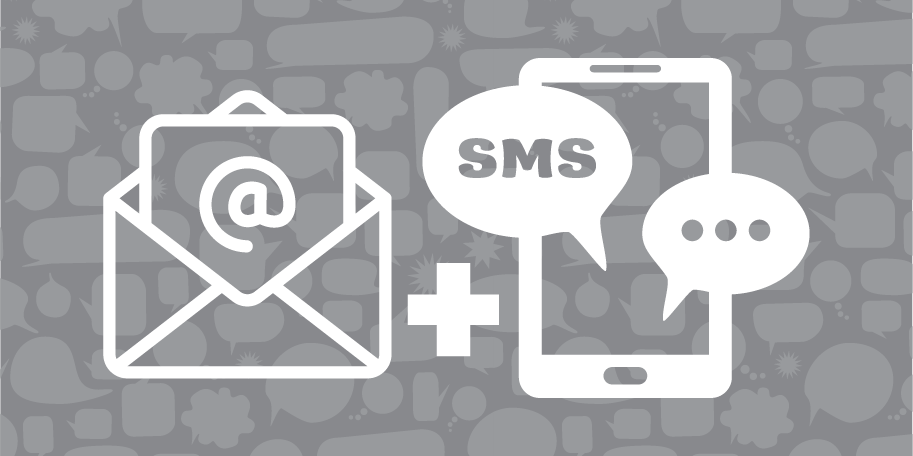One of the biggest untapped marketing channels today is SMS marketing. Brands are just beginning to scratch the surface of what can be done with this channel.
The siren call of text messaging has marketers’ ears burning. After all, 90% of text messages are opened within the first three minutes they’re sent. That’s a staggering number, especially when you compare it to the miniscule impressions and click-throughs of display advertising. You just can’t deny the power that type of urgency generates with consumers from a marketing perspective.
Despite the overwhelming possibilities of SMS marketing, it cannot succeed unless marketers understand exactly who their target audience is and what messages are most helpful to them. It also cannot be used as a standalone channel. SMS has to be a part of an overall lifecycle marketing strategy, implemented at strategic points in the customer journey to complement other channels like email marketing.
Even with the best strategy, though, there’s a huge wall you have to hurdle in order to be successful with the SMS channel. The rules and regulations surrounding SMS marketing are much stricter than those of any other channel, even email marketing. This is because SMS is still very personal. Marketers who fail to understand this can severely damage not just their SMS strategy, but their entire brand image.
SMS marketing rules
If you’re ready to launch an SMS strategy and program, you must familiarize yourself with the rules that allow marketers to use this channel. Failing to follow these SMS rules means severe consequences from the governing bodies who set them up. Several companies have already tested the waters and experienced damaging results.
#1 – you must get an explicit opt-in
Whether you include a checkbox in your preference center or you’re importing a list, you must receive a confirmation of opt-in. If you’re importing contacts into your SMS management system, you must get express written consent from each subscriber to be able to send them SMS messages. What’s the big deal with getting consent? The Telephone Consumer Protection Act (TCPA) says it will fine you up to $1,500 for each unsolicited SMS message you send. And this isn’t an empty threat: One company is facing a $250 million lawsuit because it sent unsolicited SMS marketing messages.
#2 – you must include certain words and phrases in all of your SMS marketing messages
The Cellular Telecommunications Industry Association (CTIA) created rules that must be followed if you want to use SMS to send marketing messages:
- You must state the frequency of your SMS messages. In other words, how often you’ll be sending these messages to people who have signed up for them.
- You must provide a way to reach customer support, e.g. “Text HELP”
- You must include a message about cellular providers, e.g. “Msg & Data rates may apply”
- You must include a link to your Terms and Conditions
- You must always let your subscribers know they can opt out of messages and provide a way to do so, e.g. “Text STOP to unsubscribe.”
An additional note about your Terms and Conditions: It’s important to take the time to craft your Terms and Conditions, and it’s even more important to follow them to the T. If not, things could go south pretty quickly for your company. And just as with email, if someone unsubscribes from your SMS marketing, you must honor the opt outs as soon as you can.
Spending time learning the rules of SMS marketing can seem like no fun. But we recommend understanding them fully, and making sure your team is aware of how serious the repercussions are for not proceeding with caution when it comes to following them.
SMS marketing strategy
Once you have the rules in place for your SMS marketing, it’s time to start planning your strategy and building your campaigns. Practically speaking, we recommend storing your SMS subscribers in your email service provider and sending text messages from there. This will be the simplest way for you to tie your SMS marketing into your email marketing messages.
The first hurdle of SMS marketing is getting opt-ins. Just as with email marketing, you need a list in order for this channel to have efficacy. The first step is to create a opt-in shortcode for new subscribers to use. Vanity shortcodes are the best for brand recognition and offer the least friction (text YES to COMPANYNAME) but using numbers can be equally easy to remember (text YES to 44455).
Once you’ve created your shortcode, it’s time to disseminate it out into the world and start getting those opt ins. First, add it to all of your existing marketing materials: website header and footer, email opt-in page or preference center, email templates, brochures, posters, flyers. Your shortcode should appear on all your marketing materials – print and digital.
Once you get the opt in, it’s important to plan exactly what types of messages you will send. There are a variety of messages that fit into the customer journey that are also perfect for a short and sweet message via SMS:
- promotional – giveaways, discounts, special sales
- surveys – ask your prospects or customer what they think
- customer service – follow up with your customers with appointment times or to get feedback on service interactions
- transactional – send receipts and reminders
- event invitations – invite guests to your events with a short message
All of these types of SMS marketing messages are successful when they act in step with your existing lifecycle marketing. Have an email going out to your entire list about a special sale? Send a message to SMS subscribers telling them about the same sale, but offering an increased discount.
This type of exclusivity marketing – making subscribers feel like they’re in a special club – will increase engagement and satisfaction with your SMS marketing. And when you include SMS as a touchpoint in the customer journey, you’re sure to build trust.
SMS marketing pro tips
We’ve talked rules and strategy. Now it’s time for some pro tips that will really make your SMS marketing shine.
Automation is going to be the key to making your SMS marketing work. You need to be able to send behavior-based SMS messages to your subscribers, and that can only be done through automation.
Frequency of messages should be no more than two to three times a month, especially as you’re building your list and nurturing trust with your subscribers on this channel. Be sure to only send during business hours, too. And don’t send the same message over and over again. If it’s the same offer, say it a different way.
Messaging should include elements of personalization such as first name and what type of behavior the person took. Just as with email, personalization garners high engagement rates. Use conversational language, but don’t use copy that is too familiar or personal. Keep it short and sweet: You need to pack a punch with as few words as possible. Remember, you don’t have any type of graphic design in SMS marketing, so spend as much time on your copywriting as possible.
Provide value in every message. When people say yes to you sending them SMS messages, they’ve let you into a personal space. They aren’t used to their text messages being bombarded with messages from marketers. Use caution, move slowly, and make subscribers want more of your text messages.
SMS as a part of lifecycle marketing
SMS has the potential to change the marketing landscape. It’s not just a powerful channel on its own, but increases the potency of an entire lifecycle marketing strategy when combined with other channels such a website and email marketing. Because of its overwhelming benefits, the stakes are higher when it comes to following rules and regulations. There’s no doubt SMS marketing is a high barrier of entry for marketers, but once over that barrier, the rewards are invaluable.
WhatCounts understands the power SMS marketing and the burden of responsibility that goes along with it. That’s why we’ve added SMS capabilities to our portfolio of email marketing tools, platforms, and services. With automated mass messaging, two-way communication, customer alerts, and send response capabilities, you can interact with customers and prospects on a more personal level. And with integration into our powerful email marketing platform, you can round out a streamlined, segmented, automated content marketing program that brings your audience closer to your brand.
Not a WhatCounts customer? Schedule a demo today to see how you can tie in SMS with your email marketing. And leave us your thoughts: Have you tried SMS marketing? What are you most excited about when it comes to the potential of this channel?







